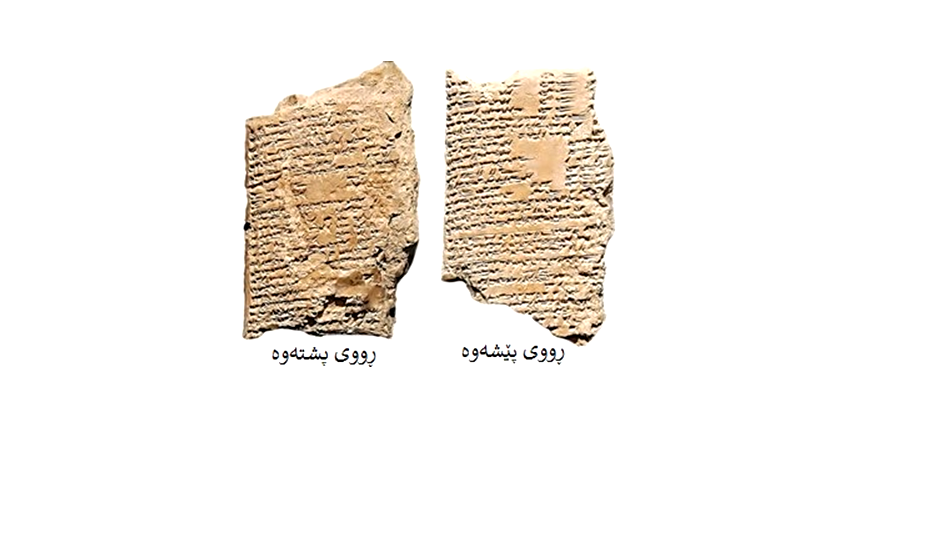Religious Commendation of Arbail (Erbil) in New Assyrian Literature in the Light of the Poetic Poem of Ashurbanipal (668-627 BC.)
DOI:
https://doi.org/10.21271/zjhs.28.3.5Keywords:
Arbail City, Ishtar Goddess, Ishtar Temple, Assyrians, Ashurbanipal.Abstract
This research is entitled (Religious commendation of Arbail (Erbil) in New Assyrian literature in the light of the poetic poem of Ashurbanipal (668-627 BC.), highlights the importance of the city of Arbail (Hewler) in the history and civilization of Mesopotamia in the seventh century BC. From the perspective of the translated cuneiform text, it is an important work of Assyrian literature because it was written under the direct supervision of Assyrian kings themselves. However, much of the text has been destroyed for natural and human reasons. However, this study is analyzed by the researcher in the context of other poems written for other Assyrian capitals similar to the city of Arbail in the seventh century BC. The research is based on theoretical analysis and comparative archaeology, and the interpretation of the research results is the result and effect of reading many similar literary and religious texts. The researcher tried to study an important literary text, an in-depth study of a poem written 2600 years ago in a precise way in archaeology, which relied on ancient features of Assyrian traditions and culture in an archaeological context and analyzed through literary evaluation. The significance of this research is that for the first time an ancient historical literary text is analyzed in detail and comprehensively relevant in terms of ancient religious thinking, culture, life and civilization, and explains the ancient religious principles of the glory of the city.
References
سهرچاوه كوردییهكان:
- ئهحمهد، كؤزاد محهمهد، (2008): كوردستانی ناوهڕاست لهنیوهی یهكهمی ههزارهی دووهمی پ.ز. دا، چاپی2، بنكهی ژین، سليمانی.
- خۆشناو، نهریمان عبدالله، (2013): ڕێزمانی كوردی، چاپی پێنجهم، چاپخانهی هێڤی، ههولێر.
- گهردی، عهزیز، (1972): ڕهوانبێژی لهئهدهبی كوردی دا، ههولێر.
سهرچاوه عهرهبیهكان:
- إبراهيم، نعمان جمعة- وآخرون، (2021): المفهوم الديني للمعابد في بلاد الرافدين، مجلة دراسات في التأريخ والآثار، العدد78، بغداد.
- ئاكره يى، عماد شاكر أحمد، (2019): المعتقدات الدينية في كردستان حتى نهاية الألف الثاني قبل الميلاد، أطروحة الدكتوراه غير منشورة، جامعة دهوك، كلية العلوم الإنسانية، التأريخ القديم.
- باقر، طه، (2009): مقدمة في تأريخ الحضارات القديمة، جزء1، دار الوراق، بيروت.
- بلباس، كاروان صديق بكر، (2020): المعابد الطولية من عصر العبيد حتى نهاية العصر البابلي القديم (4000-1595ق.م)، دارتموز، دمشق.
- بلباس، كاروان صديق بكر، (2022): الطرز العمارية للمعابد في بلاد الرافدين من الألف الرابع قبل الميلاد حتى منتصف الألف الأول قبل الميلاد (دراسة آثارية عمارية)، أطروحة الدكتوراه غيرمنشورة، كلية الآداب، جامعة صلاح الدين، قسم الآثار.
- بوتيرو، جان، (2005): الديانة عند البابليين، ترجمة: وليد الجادر، سورية.
- الجمیلی، عامر عبدالله، (2001): الكاتب في بلاد الرافدين القديمة، الموصل.
- الجادر، وليد، (1985): صناعة التعدين، حضارة العراق، الجزء2، بغداد.
- رشید، صبحي أنور، (1970): تأريخ الآلات الموسيقية في العراق القديم، بيروت.
- روثن، مارغريت، (1984): تأريخ بابل، ترجمة: زینة عازار وميشال أبي فاضل، طبعة2، بيروت.
- رينغر، يوهانس، (1979): مدينة بابل أثناء العهد البابلي القديم، مجلة سومر، مجلد35، جزء1-2، بغداد.
- ساغز، هارى، (2008): عظمة آشور، ترجمة: خالد أسعد عيسى- وأحمد غسان سبانو، دار رسلان، دمشق.
- صالح، قحطان رشيد، (1987): الكشاف الأثري في العراق، بغداد.
- عودة، ناصر محمد مكاوى- وزيبارى، عزيز محمدأمين عزيز، (2017): عشتار ومدينة أربيل، دراسات في التأريخ والآثار، العدد61، مجلة علمية محكمة، الترقيم الدولي:ISSN:2075-3047، بغداد.
- القرهداغي، رافدة عبدالصمد، (2008): كردستان العراق في التأريخ القديم في ضوء النصوص المسمارية من الألف الثالث ق.م حتى 612ق.م، أطروحة الدكتوراه، غير منشورة، جامعة السليمانية، كلية العلوم الإنسانية، قسم التأريخ.
- لابات، رينية، (2004): قاموس العلامات المسمارية، ترجمة: الأب البير ابونا- وآخرون، منشورات مجمع العلمي/بغداد.
- لابات، رینیه، (2004ب): المعتقدات الدینیة في بلاد وادي الرافدين -مختارات من النصوص البابلية- ، ترجمة: الأب ألبير أبونا، طبعة ثانية، بغداد.
- لوكاس، كرستوفر، (1980): حضارة الرقم الطينية وسياسة التربية والتعليم في العراق القديم، ترجمة: يوسف عبدالمسيح ثروة، بغداد.
- النعيمي، راجحة خضر عباس، (2011): الأعياد في حضارة بلاد وادي الرافدين، سوريا.
-
- سهرچاوه ئینگلیزییهكان:
- Adkins, L., (2004): Empires of the plain, Macmillan.
- Bienkowski, P., and Millard, A., (2000): Dictionary of the Ancient Near East, Philadelphia.
- Black, J., George, A., and Postgate, N., (1999): A concise dictionary of Akkadian, Harrassowitz Verlag, Wiesbaden.
- Ebeling, e. (1952/53): Ein Preislied auf die Kultstadt Arba-ilu aus neuassyrischer Zeit, (jahrbuch für kleinasiatische forschung), Vol. 2, pp.274-282.
- George, A.R., (1993): House most High the temples of ancient Mesopotamia, Indiana.
- Leick, G., (1999): A Dictionary of Ancient Near Eastern Mythology, London.
- Livingstone, Alasdair, (1989): Court Poetry and Literary Miscellanea, State Archive Assyria, Vol.3, Helsinki University Press.
- MacGinnis, J., (2013): Erbil in The Cuneiform sources, Erbil.
- Metcalf, CH., (2015): The gods rich in praise: Early Greek and Mesopotamian Religious Poetry, UK, pp.1-12.
- Russell, J.M., (1999): The Writing on the Wall, studies in the architectural context of late Assyrian palace Inscriptions, Indiana.
- Seton Lloyd, and Nurı Gokçe, (1953): "Sultantepe: Anglo-Turkish Joint Excavations, 1952" Anatolian Studies, Vol.3, pp. 27-47.

Downloads
Published
Issue
Section
License
Copyright (c) 2024 Karwan Saddiq Bekr Blbas

This work is licensed under a Creative Commons Attribution 4.0 International License.









